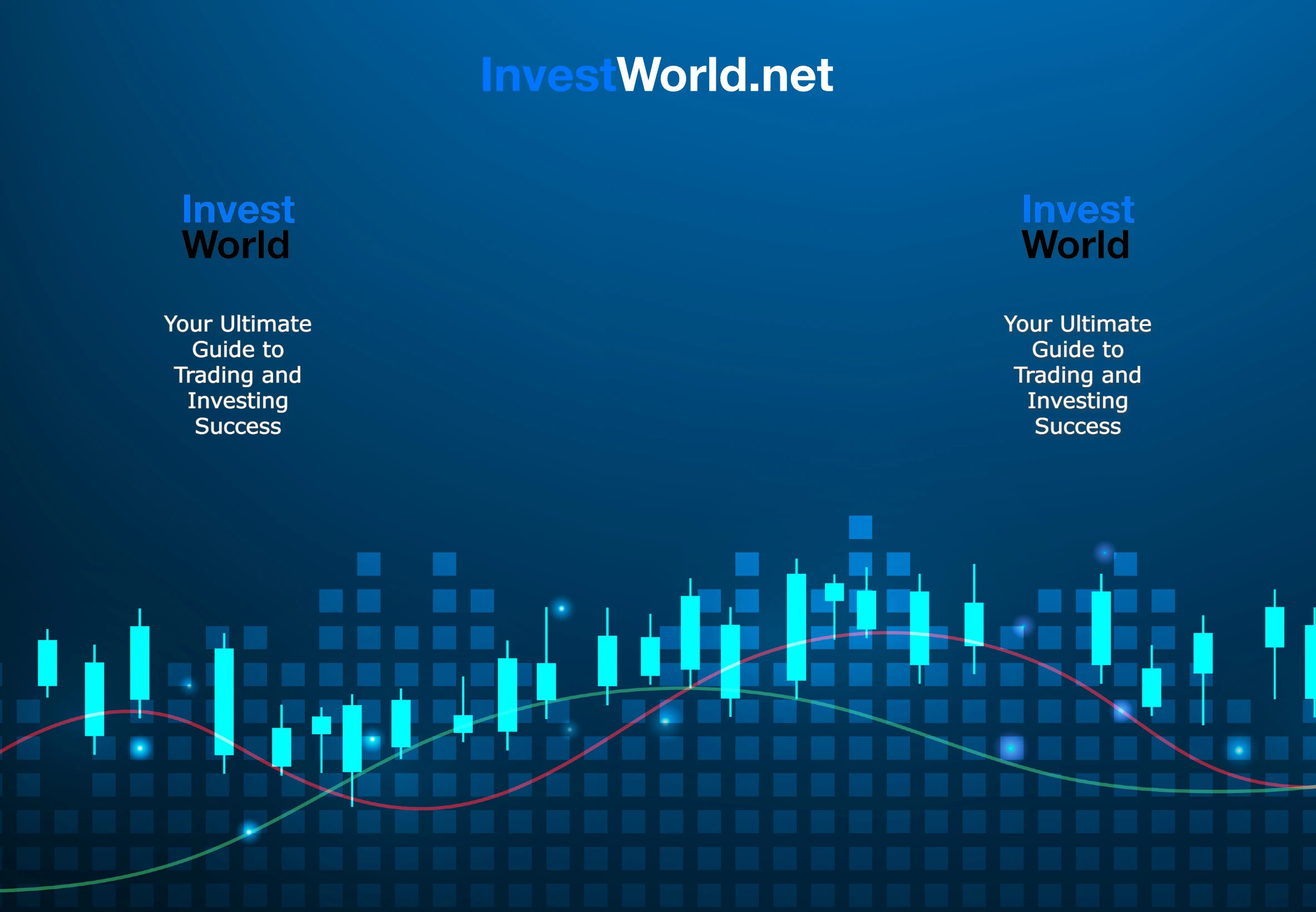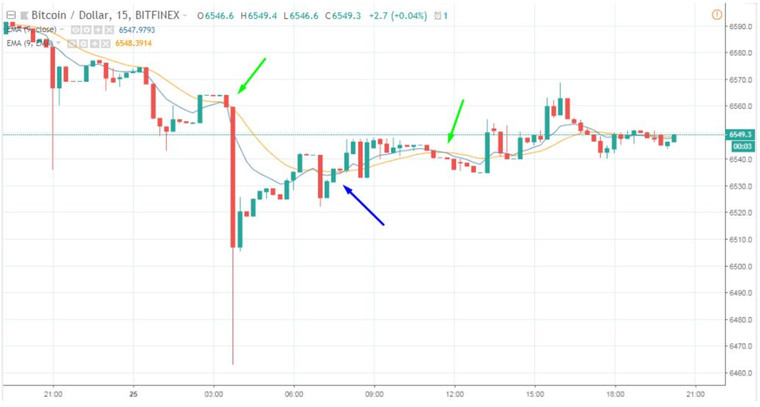There are people who simply weren’t born for long-term trading. There are many traders who rather take smaller trades with the advantage of frequency, thanks to benefits like smaller losses, no overnight fees, and let’s face it, more fun.
So, if you’re looking for ways to make your day trading more successful, then don’t be afraid. We will show you some ways you can enter trades with this timeframe and provide you with examples on how to carry them out.
Day trading is a style of trading and not a specific strategy in itself. Day traders prefer the ability to open a larger number of smaller trades instead of opening one trade and holding it for a longer-term.
1. Best Indicators For Trading the 15m Timeframe
The best indicators for this 15-minute chart strategy are the EMA, MACD, and Parabolic SAR.
The EMA lets you spot trends easier, and you can get good information if you use for example a combination of two different moving averages. The MACD offers a similar function, but it’s better for confirming trend strength. On the other hand, the Parabolic SAR lets you gauge short-term momentum and provides good stop signals when coupled with the rest.
In this graph, you can see two different EMAs. It’s easy to spot how they acted, converging when trends started (see green arrows), and then the fake signals of EMAs usually occur when there is a sideways trend with no clear direction (the blue arrow).
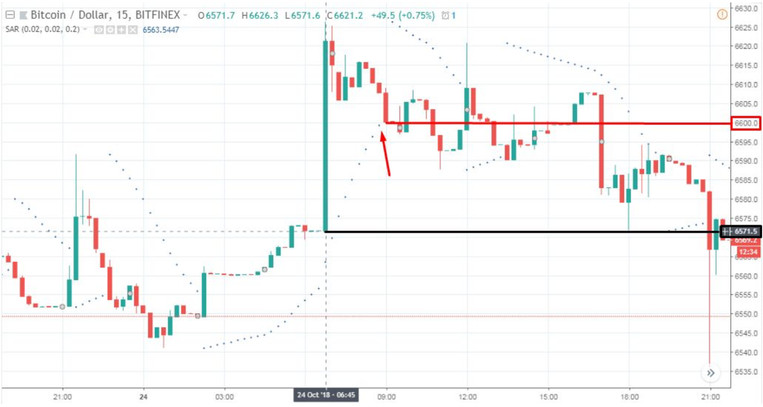
In this one, you can see how the Parabolic SAR gave an exit signal for the BUY trade while it was still in a 28.5 points profit. The Parabolic SAR is used by a lot of professional traders especially for this purpose - to trail the profit and once the indicator shows a reversal - then to exit the opened trade.
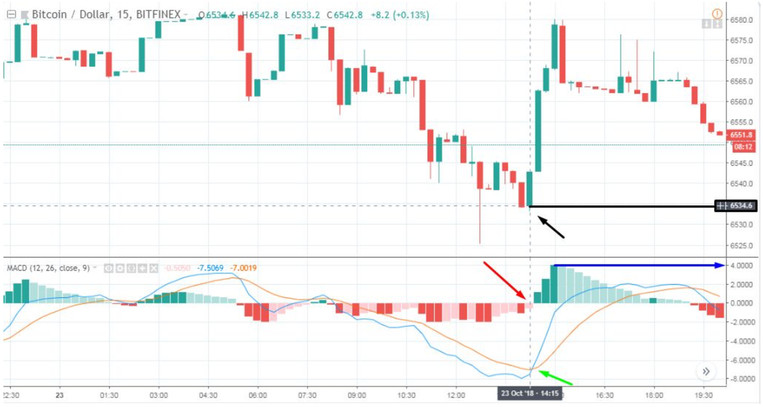
And this one’s a bit crowded, but you can see how the MACD helped here to score a HUGE profit; sit tight.
We can see that the trend is dying from the MACD momentum measure bars, with the red arrow noting a dying bar which was confirmed by the crossover (pointed out by the green bar) - unlike the previous smaller red bar which wasn’t confirmed by the averages.
So in this example, a LONG trade can be opened at the close of the green bullish candle (this was around 6543). Then when the momentum reached the top 4.0000 value of the MACD the position should be closed, which would have earned a nice profit in this case!
As you can see for yourself, the 4.0000 value of the indicator was the maximum value for a very long time (considering the intraday period) - and this was also the best time to exit the trade.
2. Trading The 15 Minutes Chart
Now, let’s look at how you can use all three indicators:
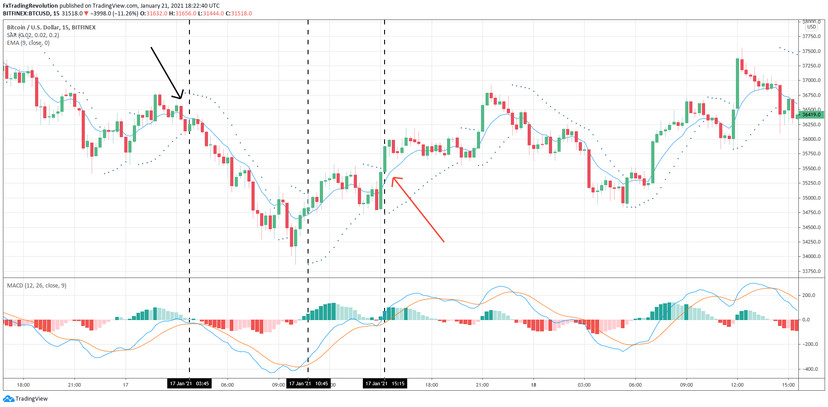
Here, three trades were entered, each with its entry and exit points colored:
1. A SELL trade ( black arrow) was opened as soon as the MACD signaled a crossover confirmed by the huge red bar. This is generally considered a little aggressive while the more conservative way to trade it is waiting for the red candle to close.
But, sometimes when such a huge move is underway, it may go too far by the time of the close so in some cases it would be appropriate to enter even before the close. And from my intraday trading experience, if we would wait for the candle close here, the whole move is most of the time over in case of intraday trading - and you can see that exactly this happened. And my trailing stop got me at 6520.
2. Then, we entered a BUY position at 6534 when the green candle broke the EMA and the Parabolic SAR, plus the MACD went from a negative to a positive value.
But both the EMA and MACD signaled poor momentum (going mostly sideways), and then there were two candles with almost no move - if the market would break them further upside, staying in the trade would be appropriate, but exactly the opposite happened - when the market broke the two sideways “non-moving” candles to the downside, this trade should be exited (this was around 6540).
3. Lastly, we went LONG again (RED) when the MACD signaled a crossover. The MACD was also going from a negative to a positive value, and the Parabolic SAR reversed.
Our stop-loss was below the low of the green entry candle as usual and we were targeting the high of the huge red candle (around 6560) - since the candle was a huge move, highs and lows of such moves are often important support/resistance levels for future trading.
As you can see, no two trades are exactly the same and can’t always be traded by exactly the same rules. The market often changes, and it's important to be able to read the context of the market. If you will learn how to read the context of the market and the confluence factors, you will be on the best way to achieve profitable results.
Take care and trade well!
